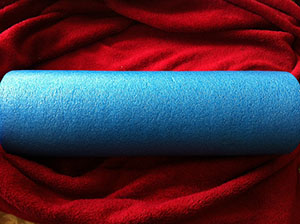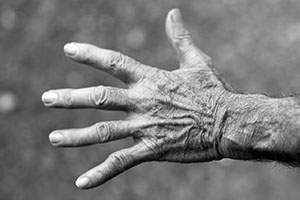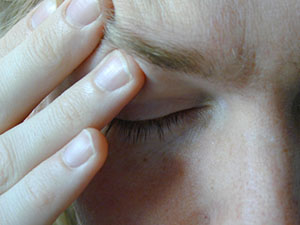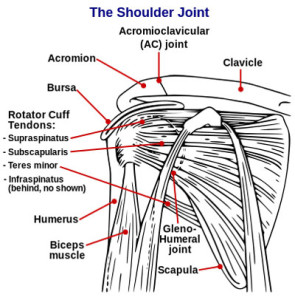- Integrated Body Therapies
Christine A. Ruppert, LMT5712 Stillwell Road
Rockville, MD 20851301-231-8695
Massage
Natural Ways To Relieve Sinus Pressure and Congestion
Sinus congestion can turn an otherwise perfect day upside down. The pain, inflammation, and general discomfort can drive a person crazy. Thankfully, however, there are some natural ways to relieve nasal pressure and congestion.
Humidifier
You might be surprised to learn that a humidifier can relieve sinus pressure. Many people experience nasal congestion during the winter because of the dry air. Low humidity causes the sensitive mucus membranes lining the nasal passage to dry out and even crack, resulting in painful inflammation. This inflammation squeezes the nasal passage together, making it difficult to breath through your nose. continue reading
The Surprising Benefits of Using a Foam Roller
 Foam rollers have become increasingly popular over the past few years. Featuring a simple log-shaped piece of foam, they offer a wide range of benefits from soothing muscle pains to preventing injury. Of course, these are just a few of the many reasons why you should use a foam roller.
Foam rollers have become increasingly popular over the past few years. Featuring a simple log-shaped piece of foam, they offer a wide range of benefits from soothing muscle pains to preventing injury. Of course, these are just a few of the many reasons why you should use a foam roller.
One of the great things about foam rollers is the countless number of ways that you can use them. One of the easiest techniques is by getting in the “crab crawl” position with the foam roller placed under one of your legs. As you glide back and forth, the roller will massage the calf muscle. continue reading
Reduce Rheumatoid Arthritis Joint Pain With Massage
 Do you suffer from the chronic inflammatory joint disorder known as rheumatoid arthritis (RA)? If so, you aren’t alone. According to the Arthritis Foundation, approximately 1.5 million people in the U.S. have the disease (source). While it’s more common in adults over the age of 35, both men and women of all ages can develop RA.
Do you suffer from the chronic inflammatory joint disorder known as rheumatoid arthritis (RA)? If so, you aren’t alone. According to the Arthritis Foundation, approximately 1.5 million people in the U.S. have the disease (source). While it’s more common in adults over the age of 35, both men and women of all ages can develop RA.
To better understand RA, you must first take a step back to view how the body responds to foreign invaders. When bacteria, mold or other invaders attempt to enter and attack the body, the immune system responds with its own attack. With RA, however, the immune system views the soft tissue surrounding the joints as foreign invaders – thus creating a wide range of unpleasant symptoms. continue reading
Benefits of a 90-Minute Massage
 While massage therapy is most beneficial if you have it done on a regular basis, it’s also true that even a single 90-minute massage session can have a profound impact on your physical and mental well-being. A skilled massage therapist can identify and target “problem areas” within your body, kneading out myofascial trigger points (muscle knots) while leaving you feeling fresh and rejuvenated. continue reading
While massage therapy is most beneficial if you have it done on a regular basis, it’s also true that even a single 90-minute massage session can have a profound impact on your physical and mental well-being. A skilled massage therapist can identify and target “problem areas” within your body, kneading out myofascial trigger points (muscle knots) while leaving you feeling fresh and rejuvenated. continue reading
Tired of Painful, Achy Feet? Try These Remedies
 Do your feet feel tired and achy regularly or at the end of some days? Foot irritations may present in the form of minor tenderness or swelling, or may have transitioned to the level of pain, which could even restrict your ability to run/walk. Given the demands we place on our feet, it’s easy to imagine how they can become overused or abused.
Do your feet feel tired and achy regularly or at the end of some days? Foot irritations may present in the form of minor tenderness or swelling, or may have transitioned to the level of pain, which could even restrict your ability to run/walk. Given the demands we place on our feet, it’s easy to imagine how they can become overused or abused.
You might be surprised to learn that there are 24 different bones in the average person’s foot, along with the hundreds of nerve endings. If your foot is injured, or even one of these bones becomes misaligned, a wide variety of symptoms, including pain, swelling and tenderness may result.
More serious conditions are sometimes evident, and you should consult your physician if pain is extreme or becomes persistent. Taking care of your feet is essential to preventing future pain and problems from developing. continue reading
2 Powerful Ways To Treat Myofascial Pain Syndrome
 Myofascial pain syndrome (MPS) is a chronic condition that’s characterized by muscle spasms, aches and pains. Individuals experiencing this condition often have “trigger points” (TPs) which manifest these symptoms. Direct pressure applied to a TP area may activate localized sharp pain and aching sensation – a precursor to some level of pain or other nerve irritation occurring in another area. Symptoms of myofascial pain syndrome vary depending on the individual and his or her bodily reactions. Some people experience a very minimal light pain in the affected region, while others report severe, debilitating pain. continue reading
Myofascial pain syndrome (MPS) is a chronic condition that’s characterized by muscle spasms, aches and pains. Individuals experiencing this condition often have “trigger points” (TPs) which manifest these symptoms. Direct pressure applied to a TP area may activate localized sharp pain and aching sensation – a precursor to some level of pain or other nerve irritation occurring in another area. Symptoms of myofascial pain syndrome vary depending on the individual and his or her bodily reactions. Some people experience a very minimal light pain in the affected region, while others report severe, debilitating pain. continue reading
What You Should Know About Thoracic Outlet Syndrome
 Thoracic Outlet Syndrome (TOS) is a medical term used to describe the compression of nerves and blood vessels in the narrow upper-body passage known as the thoracic outlet. This is a small area that’s located between the collarbone and first rib. If it becomes squeezed, either by nearby muscles or even bones, an individual may experience dull, aching pains in the neck, arm and back, and often numbness & tingling down to the fingers. continue reading
Thoracic Outlet Syndrome (TOS) is a medical term used to describe the compression of nerves and blood vessels in the narrow upper-body passage known as the thoracic outlet. This is a small area that’s located between the collarbone and first rib. If it becomes squeezed, either by nearby muscles or even bones, an individual may experience dull, aching pains in the neck, arm and back, and often numbness & tingling down to the fingers. continue reading
Do You Suffer From Arthritis? Try Massage Therapy
 Arthritis is classified as a joint disorder in which one or more joints becomes inflamed. This inflammation often results in sharp pain and limited mobility, making it difficult for individuals to perform otherwise normal tasks, such as lifting or gripping objects. If you suffer from arthritis, though, you may find relief in massage therapy. To learn more about this condition and the healing power of massage, keep reading. continue reading
Arthritis is classified as a joint disorder in which one or more joints becomes inflamed. This inflammation often results in sharp pain and limited mobility, making it difficult for individuals to perform otherwise normal tasks, such as lifting or gripping objects. If you suffer from arthritis, though, you may find relief in massage therapy. To learn more about this condition and the healing power of massage, keep reading. continue reading
The Surprising Benefits of Thai Massage
 Also referred to as the yoga massage, Thai massage is a unique system of massage therapy that originated out of Thailand some 2,500 years ago. It’s characterized by kneading, rolling and even pulling on various parts of the client’s body. Unlike most forms of massage, however, a specialist performing a Thai massage may use his or her thumbs, palms, knees, elbows and forearms. To learn more about this unique system of massage and the numerous benefits it offers, keep reading. continue reading
Also referred to as the yoga massage, Thai massage is a unique system of massage therapy that originated out of Thailand some 2,500 years ago. It’s characterized by kneading, rolling and even pulling on various parts of the client’s body. Unlike most forms of massage, however, a specialist performing a Thai massage may use his or her thumbs, palms, knees, elbows and forearms. To learn more about this unique system of massage and the numerous benefits it offers, keep reading. continue reading
Do You Suffer From Sciatica? Try Massage Therapy
 Sciatica, also known as lumbar radiculopathy, is a painful condition in which one or both sides of the sciatic nerve is compressed. The sciatic nerve is the longest nerve in the human body, stretching from the lower back and splitting into two at the pelvis, with one nerve going down each leg. It is responsible for sending and receiving electrical impulses from the brain, essentially telling the muscles in the legs and feet when to contract.
Sciatica, also known as lumbar radiculopathy, is a painful condition in which one or both sides of the sciatic nerve is compressed. The sciatic nerve is the longest nerve in the human body, stretching from the lower back and splitting into two at the pelvis, with one nerve going down each leg. It is responsible for sending and receiving electrical impulses from the brain, essentially telling the muscles in the legs and feet when to contract.
There are several different factors known to play a role in the formation of sciatica, including weight gain, spinal disc herniation, spinal stenosis, piriformis syndrome, pregnancy, and trauma to the spine or surrounding tissue. Normally, the sciatic nerve remains unconstrained, but there are certain conditions, diseases and injuries that will compress the nerve, resulting in sciatica. continue reading
